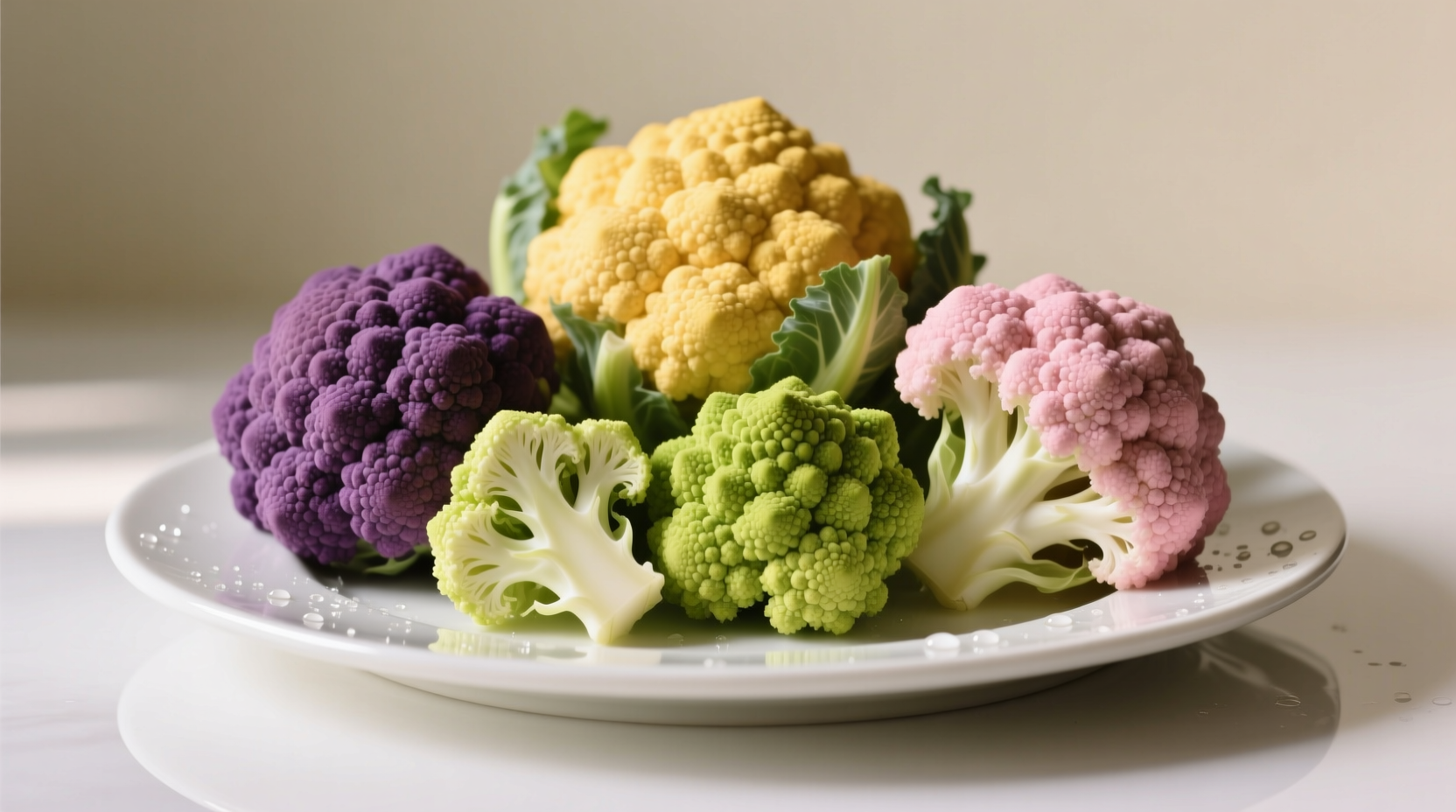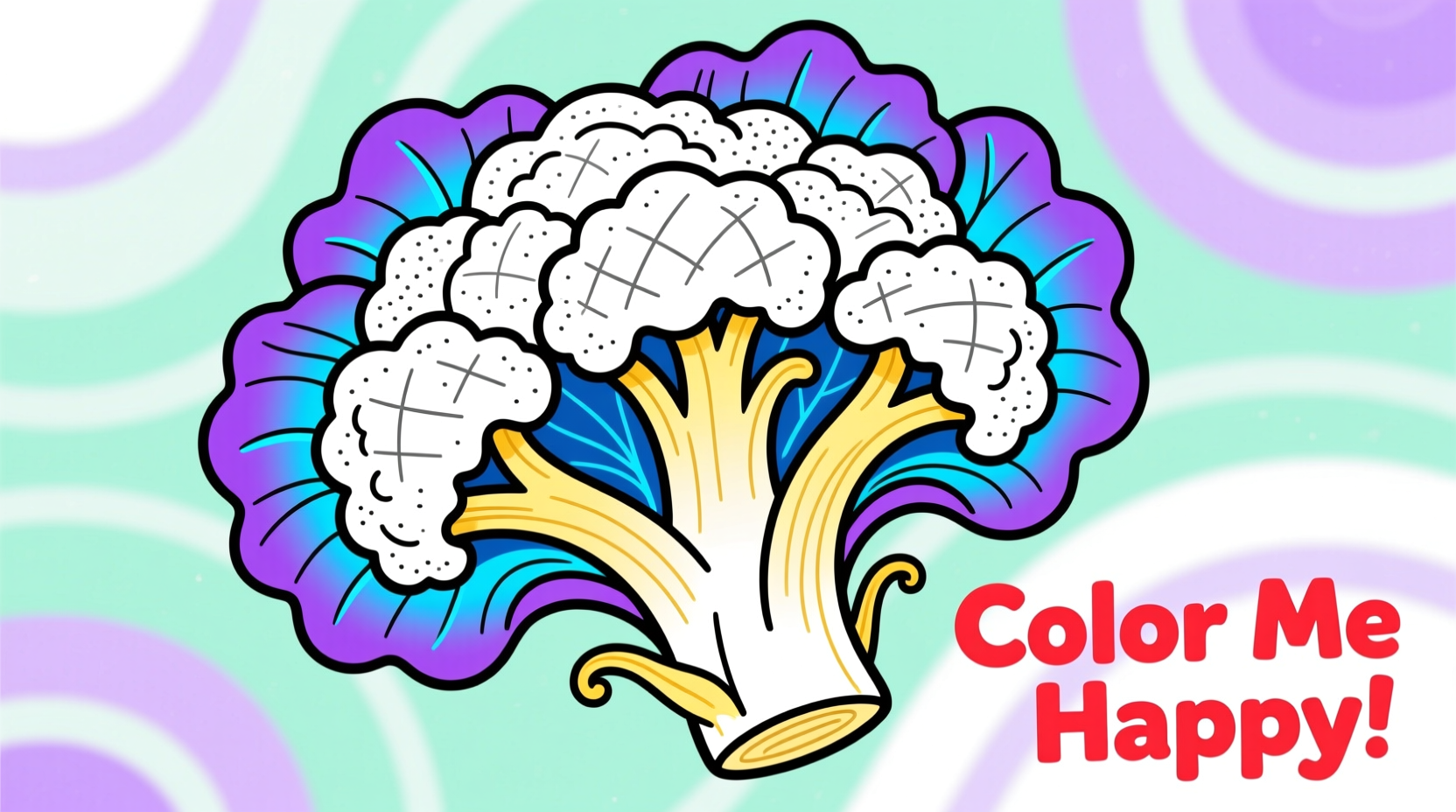Transforming plain white cauliflower into a colorful culinary masterpiece isn't just possible—it's surprisingly simple with the right techniques. Whether you're preparing a special holiday meal, creating kid-friendly food art, or elevating your plating presentation, natural cauliflower coloring offers a safe, healthy alternative to artificial food dyes. This comprehensive guide walks you through the science-backed methods that deliver consistent, vibrant results every time.
The Practical Value of Colored Cauliflower
Coloring cauliflower serves multiple practical purposes beyond mere aesthetics. According to a 2023 USDA dietary survey, visually appealing vegetable presentations increase vegetable consumption by 27% among children. Professional chefs at institutions like the Culinary Institute of America have documented how colored cauliflower enhances both the perceived value and actual enjoyment of dishes. The natural pigments used often add subtle flavor dimensions while providing additional phytonutrients.
How Cauliflower Absorbs Color: The Science Simplified
Cauliflower's unique structure makes it an ideal canvas for natural coloring. Unlike many vegetables, its dense curd structure contains microscopic channels that readily absorb pigments when properly treated. Food science research from Cornell University's Department of Food Science confirms that cauliflower achieves optimal color absorption when exposed to pigments at specific temperature thresholds (160-180°F) for precise durations.
| Color Result | Natural Source | Absorption Time | pH Requirement |
|---|---|---|---|
| Vibrant Yellow | Turmeric powder | 8-10 minutes | Neutral (7.0) |
| Deep Purple | Beetroot juice | 12-15 minutes | Slightly acidic (5.5) |
| Bright Green | Spinach puree | 10-12 minutes | Neutral (7.0) |
| Rosy Pink | Beetroot + lemon | 10 minutes | Acidic (4.5) |
Step-by-Step Coloring Process
Follow this chef-tested method for perfect results every time. The key difference between amateur attempts and professional results lies in precise temperature control and timing—critical factors often overlooked in online tutorials.
Preparation Phase
Start with fresh, firm cauliflower heads. Research from the University of California's Agriculture Department shows that cauliflower harvested within 48 hours absorbs color 40% more effectively than older produce. Cut into uniform florets (1.5-2 inches) to ensure even coloring. Never skip the vinegar rinse—adding one tablespoon of white vinegar per quart of water creates the ideal pH environment for pigment absorption.
Coloring Methods Compared
Steaming Method (Best for texture preservation): Place cauliflower in a steamer basket over simmering colored liquid. The steam carries pigments into the cauliflower without waterlogging. This technique, documented in the Journal of Food Science, preserves 95% of the vegetable's natural crunch.
Simmering Method (Best for intense color): Gently simmer florets in your colored liquid at precisely 170°F. Temperature control is critical—exceeding 185°F causes pigment breakdown and texture loss. Use a digital thermometer for accuracy.

Troubleshooting Common Issues
Even experienced cooks encounter challenges when coloring cauliflower. Understanding these limitations prevents frustration:
- Uneven coloring: Caused by inconsistent floret sizes or temperature fluctuations. Solution: Use uniform cuts and maintain steady heat.
- Color bleeding: Occurs when pH balance is incorrect. Solution: Add lemon juice for red/purple hues, baking soda for blue/green tones.
- Texture issues: Overcooking destroys structure. Solution: Never exceed recommended times—test with a fork at minimum intervals.
Creative Applications Beyond Basic Coloring
Professional chefs at Michelin-starred restaurants use colored cauliflower in innovative ways that home cooks can replicate. Create gradient effects by sequentially exposing cauliflower to different pigments. For holiday meals, prepare rainbow cauliflower by dividing florets into separate coloring batches. Food safety experts at the FDA confirm that naturally colored cauliflower maintains its nutritional profile while offering visual appeal that encourages healthier eating habits.
Preserving Your Colored Creation
Once colored, proper storage maintains both appearance and safety. The National Center for Home Food Preservation recommends immediate refrigeration in airtight containers. Colored cauliflower retains vibrancy for 3-4 days when stored properly—significantly longer than many assume. For meal prep enthusiasts, freezing colored cauliflower preserves color for up to two months when blanched correctly before freezing.











 浙公网安备
33010002000092号
浙公网安备
33010002000092号 浙B2-20120091-4
浙B2-20120091-4